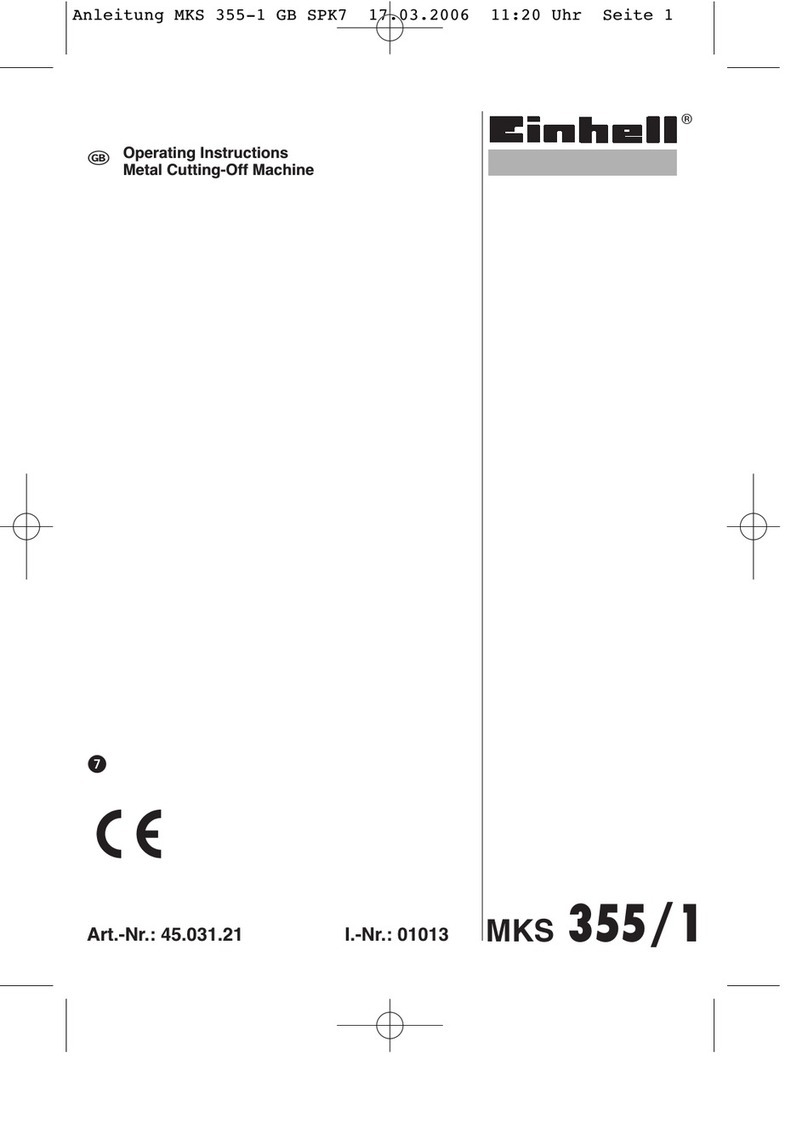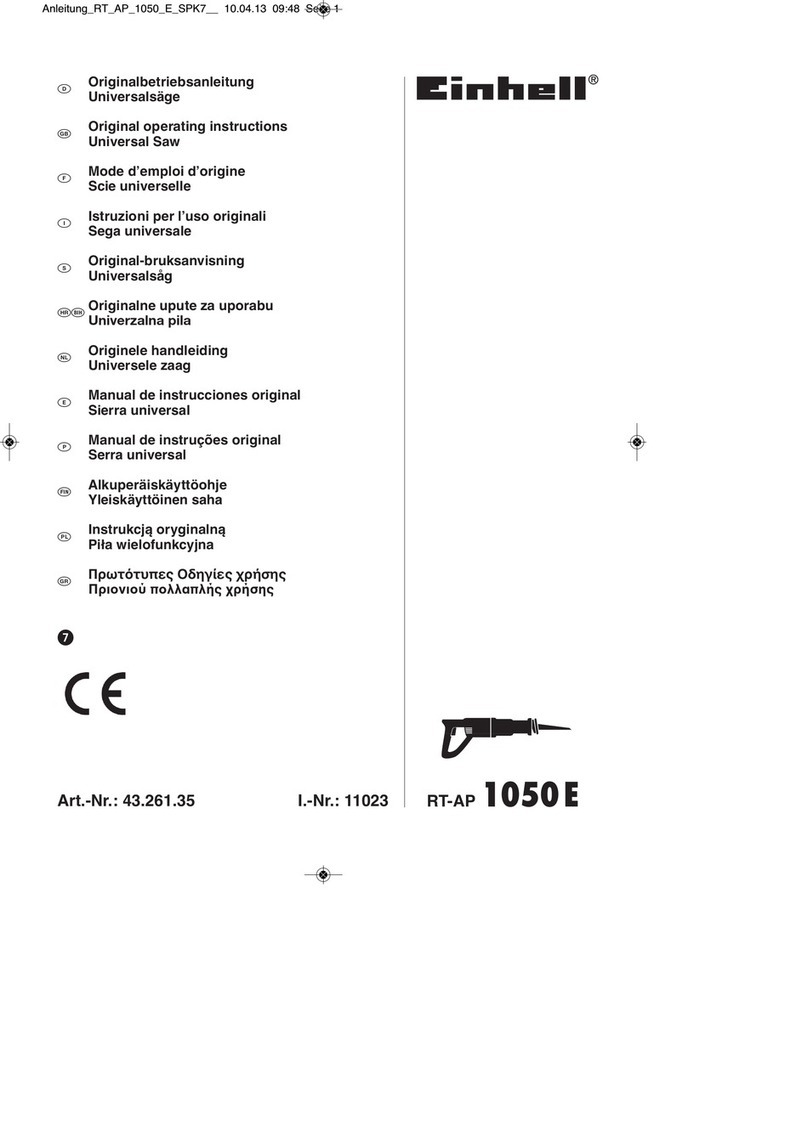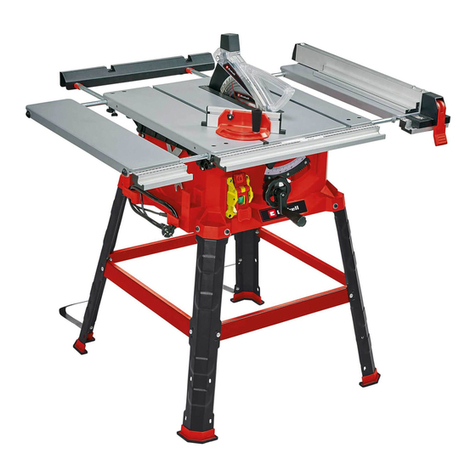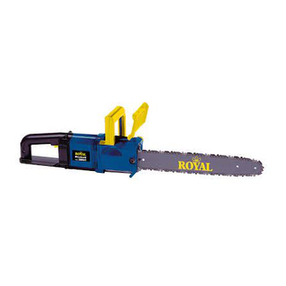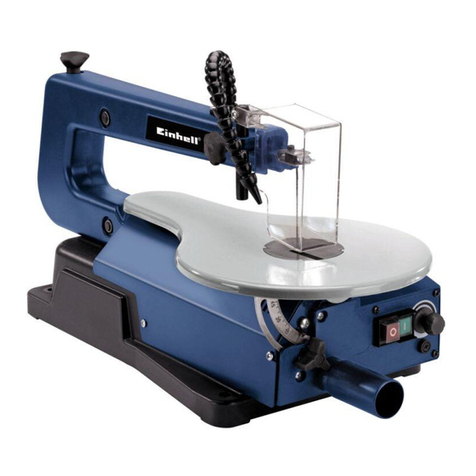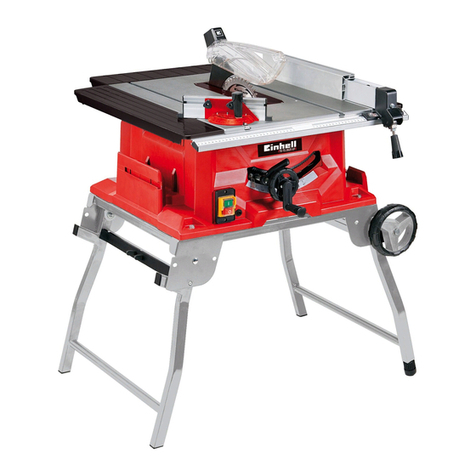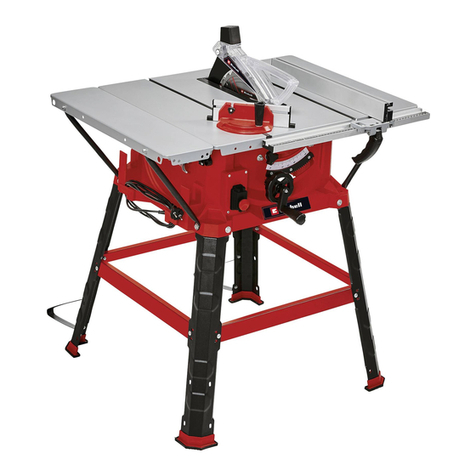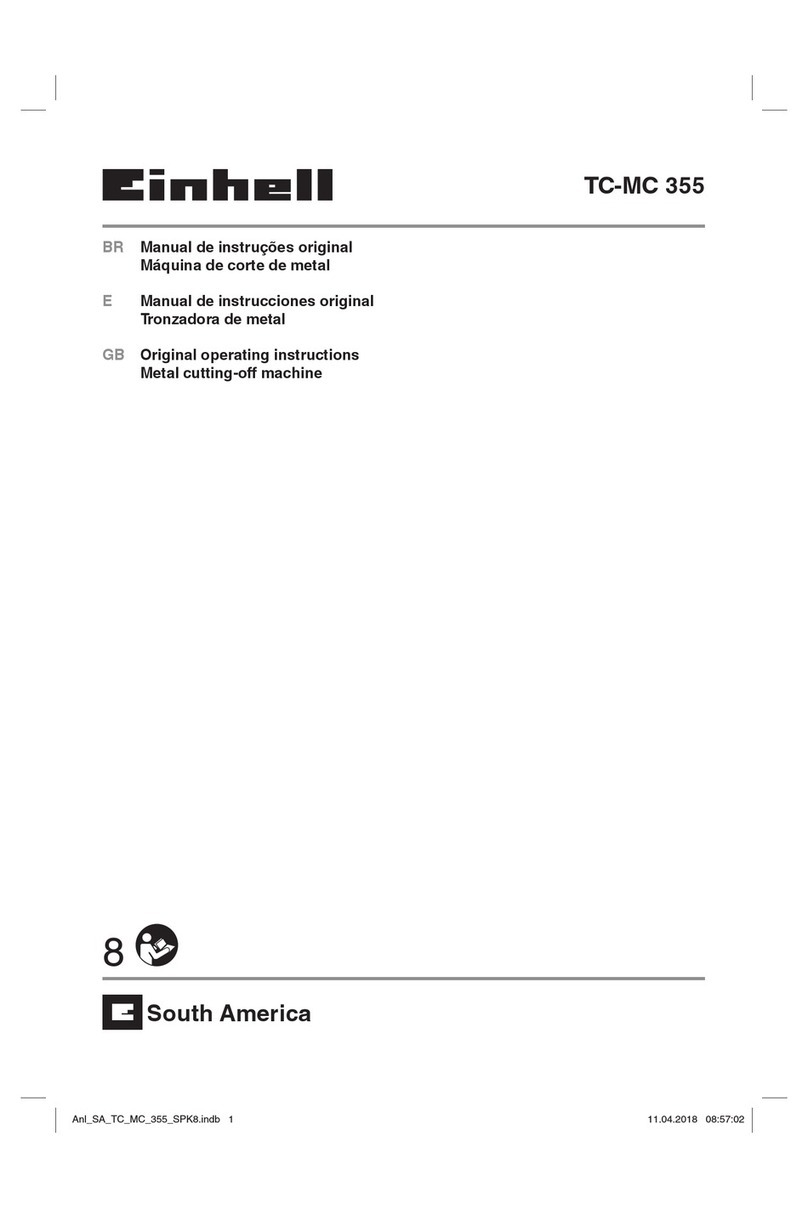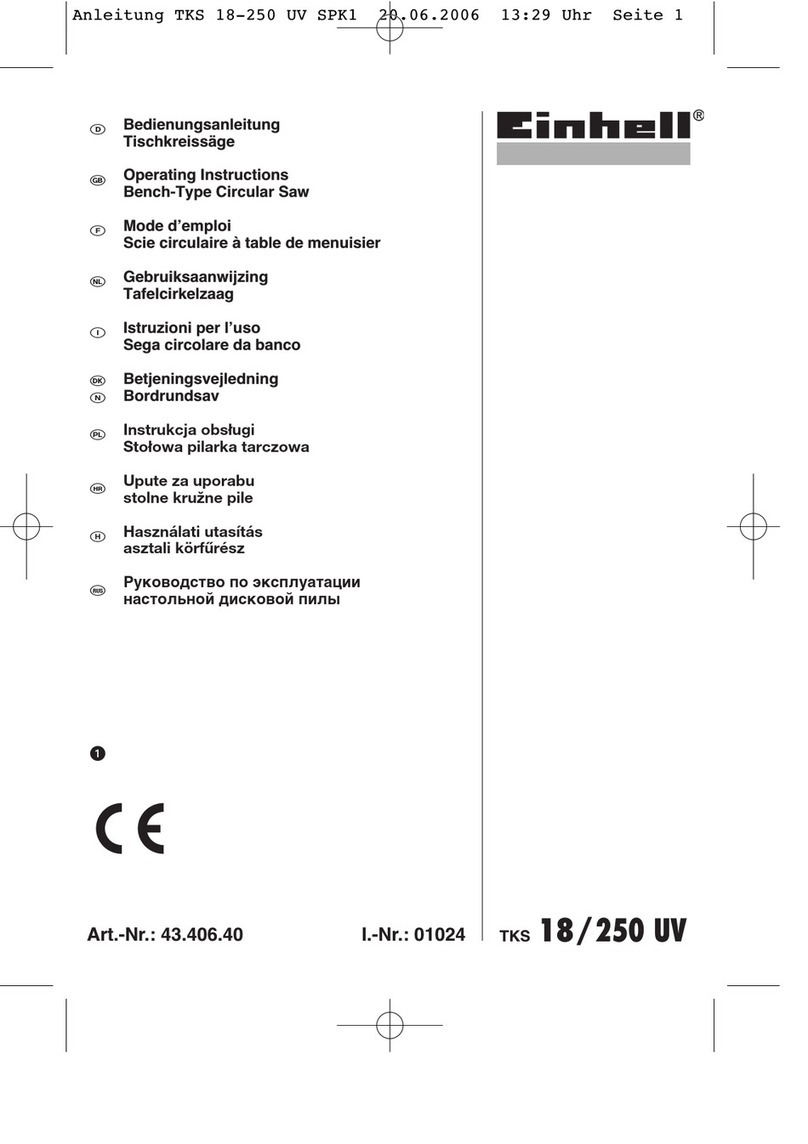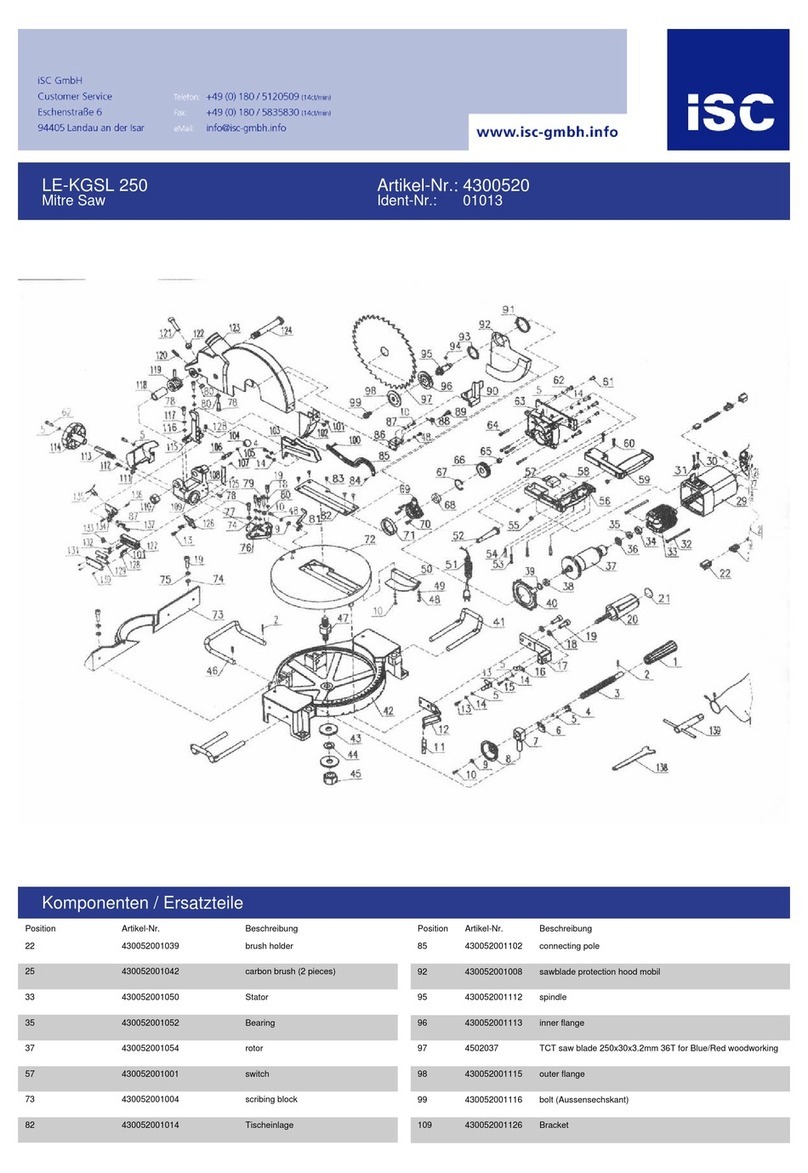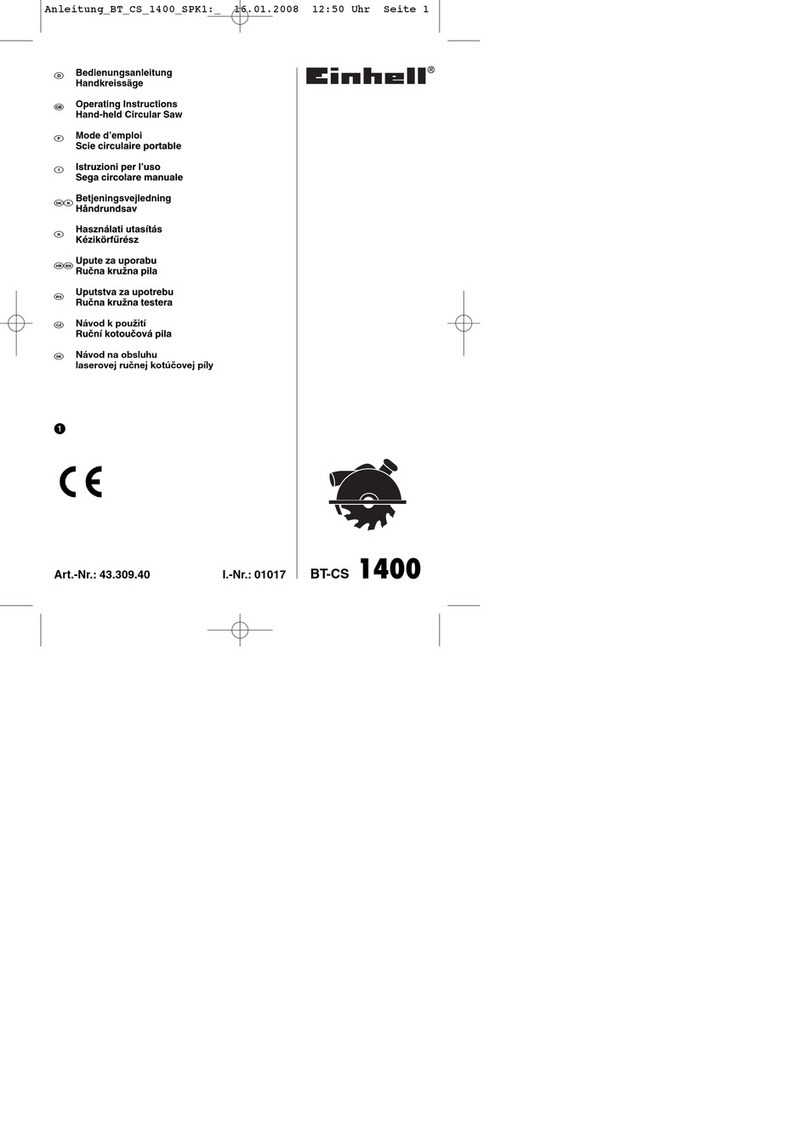Noise emission values
앬The sawʼs noise is measured in accordance with
DIN EN ISO 3744; 11/95, E DIN EN 31201; 6/93,
ISO 7960 Annex A; 2/95. The machine may
exceed 85 dB(A) at the workplace. In this case,
noise protection measures need to be introduced
for the user (ear-muffs).
Idling
Sound pressure level LpA 92,2 dB
Sound power level LWA 105,2 dB
„The quoted values are emission values and not
necessarily reliable workplace values. Although there
is a correlation between emission and immission
levels it is impossible to draw any certain conclusions
as to the need for additional precautions. Factors
with a potential influence on the actual immission
level at the workplace include the duration of impact,
the type of room, and other sources of noise etc.,
e.g. the number of machines and other neighboring
operations. Reliable workplace values may also vary
from country to country. With this information the
user should at least be able to make a better
assessment of the dangers and risks involved.“
5. Technical data
Asynchronous motor: 230 V ~ 50 Hz
Power rating: 600 W S1 800 W S2 10 min
Idle speed n0: 2950 rpm
Carbide saw blade: 200 x 16 x 2.4 mm
Number of teeth: 24
Table size: 505 x 335 mm
Cutting height max. 90°: 45 mm
Cutting height max. 45°: 27 mm
Connector for dust extractor: dia. 24 mm
Size, complete: 505 x 335 x 320 mm
Weight: 10 kg
Load factor:
A load factor of S2 10 min (intermittent periodic duty)
means that you may operate the motor continuously
at its nominal power level (800 W) for no longer than
the time stipulated on the specifications label (10
minutes ON period). If you fail to observe this time
limit the motor will overheat. During the OFF period
the motor will cool again to its starting temperature.
6. Before putting the machine into
operation
앬The machine has to be set up where it can stand
firmly, e.g. on a work bench, or it must be bolted
to a strong stand.
앬All the covers and safety devices have to be
properly fitted before the machine is switched on.
앬It must be possible for the saw blade to run
freely.
앬When working with wood that has been
processed before, watch out for foreign bodies
such as nails or screws etc.
앬Before you actuate the On/Off switch, make sure
that the saw blade is correctly fitted and that the
machineʼs moving parts run smoothly.
앬Before you connect the machine to the power
supply, make sure the data on the rating plate is
the same as that for your mains.
7. Assembly
Always pull out the power plug before carrying
out any maintenance or conversion work.
7.1 Fitting the saw blade (Fig. 2/3)
앬Caution! Pull out the power plug.
앬Unscrew the fixing screws (20) and remove chip
bin cover (19).
앬Undo the nut (21) with a ring wrench (30) on the
nut itself and a face spanner (31) on the saw shaft
to apply counter-pressure.
앬Caution! Turn the nut in the direction of rotation
of the saw blade (4).
앬Take off the outer flange (22) and pull the old
saw blade (4) off the inner flange by dropping the
blade at an angle.
앬Clean the mounting flange.
앬Fit the new saw blade in reverse order.
앬Caution! Note the direction of rotation (see
arrow on the saw blade).
7.2 Adjusting the splitter (Fig. 4-6)
앬Remove the saw blade guard (2) (see 7.3).
앬Take out the table insert (6) (see 7.4).
앬Slacken the two hexagon socket-head screws
(24).
앬Adjust the splitter (5) so that the gap between the
saw blade (4) and the splitter (5) equals 3 - 5 mm
(see Fig. 6)
앬The splitter (5) has to be in line with the saw
blade (4) in longitudinal direction.
앬Retighten the two screws (24).
앬The setting of the splitter has to be checked each
GB
11


